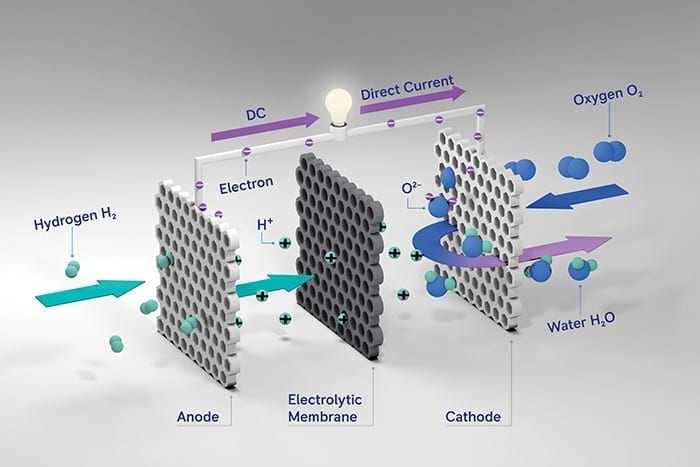
The global fuel cell for stationary power market size is estimated to register a notable CAGR of 11.1% during the forecast period. The market is projected to reach US$ 5,676.8 million by 2033 from US$ 1,981.4 million in 2023.
In search of sustainable energy sources, mankind has explored the technology of hydrogen-powered fuel cells that can replace conventional fuel requirements with efficiency and few pollution levels. With the rapid expansion of stationary hydrogen fuel cells, the cost of technology is declining quickly, further boosting the fuel cell for the stationary power market in recent years.
The combustion-less generation of power by the chemical combination of hydrogen gas makes a system release a negligible amount of pollutants and high efficiency than the traditional power generation methods.
The advantages obtained from fuel cell stationary power generation make it a suitable alternative for the future world. This is further supported by the increasing global population, becoming increasingly concerned about environmental degradation and depleting fossil fuel resources. The market players dealing with any service or product concerning hydrogen fuel cells are predicted to experience significant growth in the coming years.
What are the Present Dynamics of the Global Fuel Cell for Stationary Power Market?
Increased government spending for providing suitable infrastructure for the establishment of clean and green energy sources is the main factor for such remarkable growth in stationary fuel cell power plants in different countries. To make it popular for use in daily life, the market players are optimizing technologies used in the making of fuel cells according to specific purposes.
Unreliability on the electricity supply grid is another main reason for the increased number of installation hydrogen electricity generators by many industrial and commercial units. Also, in the case of other unconventional energy sources, lithium-ion batteries are the quintessential material, which is a non-renewable resource. With the increasing demand for clean energy sources and dismissing stock of lithium elements, the hydrogen fuel cell is predicted to overtake the green energy market.
What are the Key Challenges Limiting the Growth of the Fuel Cell for the Stationary Power Industry?
The oil boom in Northern America and the deregulation of fossil fuels resulting in decreased prices of petroleum and diesel can delay the adoption of hydrogen fuel cells and hamper its development to make it a worldwide market.
The high cost of raw materials and the manpower required to operate is still at a developing stage in many regions. This may pose a key limitation for the market players in the fuel cell for the stationary power market. Providing sufficient service for installation and maintenance with an affordable stationary fuel cell cost is the main challenge that the market players need to overcome to make a successful business.
What is the Competitive Landscape in the Global Fuel Cell for Stationary Power Market?
All the leading market players are continuously investing in research and development activities and developing new products for making their brands popular among consumers.
The growing demand for hydrogen fuel cell generators for homes is the main attraction for new business ventures entering the market and competing with established companies.
The establishment of local players in different geographical regions is a prominent driving factor for the increased amount of mergers and acquisitions undertaken by key players to remain competitive in the stationary fuel cell power plants market.
Recent Developments in the Market
In December 2020, Robert Bosch declared its plans to invest in full-scale production of solid oxide fuel cells (SOFC) and set up a production unit with an annual capacity of about 200 MW. This development is expected to increase the market value of Bosch stationary fuel cells across all the regions
In October 2021, the global power leader Cummins Inc. released the large proton exchange membrane (PEM) electrolyzer that is operational in Quebec, Canada. It is been regarded as the beacon for the zero-carbon future.跑